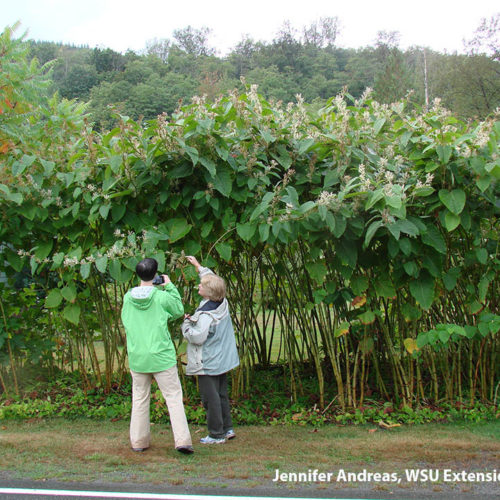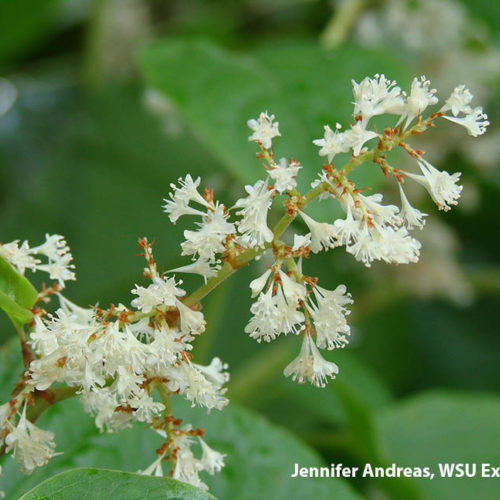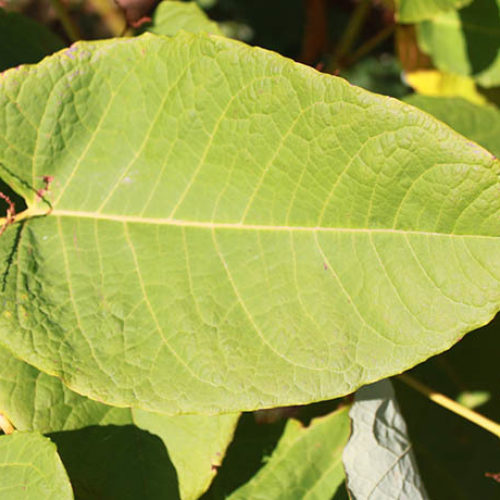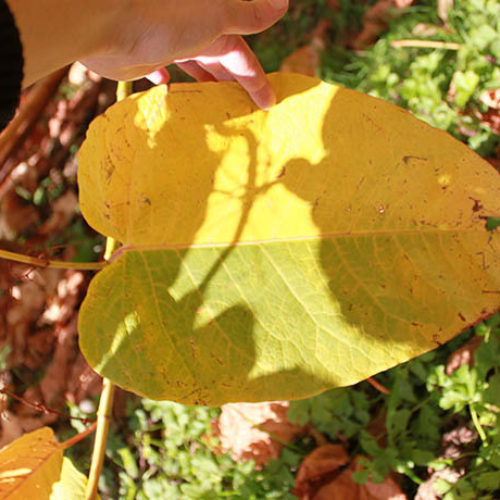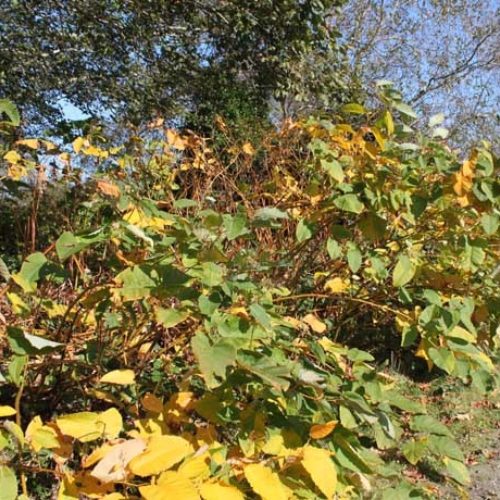Giant Knotweed
Polygonum sachalinense

Family: Polygonaceae
Other Scientific Names:
Fallopia sachalinensis, Reynoutria sachalinensis
Other Common Names: Sakhalin knotweed
Weed class: B
Year Listed: 1999
Native to: Asia
Is this Weed Toxic?:
not known to be
Legal listings:
This plant is also on the Washington State quarantine list. It is prohibited to transport, buy, sell, offer for sale, or distribute plants or plant parts of quarantined species into or within the state of Washington or to sell, offer for sale, or distribute seed packets of seed, flower seed blends, or wildflower mixes of quarantined species into or within the state of Washington. Please see WAC 16-752 for more information on the quarantine list. For questions about the quarantine list, contact the Washington State Department of Agriculture's Plant Services Program at (360) 902-1874 or email PlantServices@agr.wa.gov.
Why Is It a Noxious Weed?
It creates dense colonies that exclude native vegetation and greatly alter natural ecosystems. Established populations are extremely persistent and difficult to eradicate, even very small fragments can form new plants.
How would I identify it?
General Description
Giant knotweed is an herbaceous perennial, strongly rhizomatous, growing over 12 feet tall. It has huge elephant-ear shaped leaves. It is similar to Japanese knotweed but its features are larger in size.
Flower Description
Flowers are white with a greenish tint and are in small clusters (panicles) in the leaf axils mainly on the upper portions of the stems.
Leaf description
Leaves are alternate, very large and heart shaped. They are often more than a foot long and 2/3 as wide.
Stem description
Stems are hollow, jointed and swollen at the nodes.
Fruit Seed Description
The seed structure is a 3-sided achene that is shiny and brown-black.
May Be Confused With
Knotweed species resemble each other, and as the name implies, giant knotweed is much larger than the other invasive knotweeds found in Washington: Himalayan, Japanese, and Bohemian knotweeds. If you need help with plant identification, please contact your county noxious weed coordinator.
Where does it grow?
Giant knotweed is found along stream banks, in moist waste places, neglected gardens, roadsides and railroad right-of-ways. Please click here to see a county level distribution map of giant knotweed in Washington.
How Does it Reproduce?
Giant Knotweed reproduces mainly by rhizomes.
How Do I Control It?
GENERAL CONTROL STRATEGY
Controlling invasive knotweed species typically takes a number of years and monitoring the site for regrowth is critical. Care must be taken not to produce new plants. All plant material should be removed and properly disposed of as new plants can sprout from very small fragments. Check with your county noxious weed control board about how to best dispose of plant parts. Plants can be dried and burned but make sure to check with local burning restrictions and if any permits are needed.
MECHANICAL CONTROL
Grubbing out small clumps when discovered can prevent new colonies from establishing but is time-consuming. Rhizomes and fragments left in the ground, or nearby, can regenerate and spread infestations. The entire root system must be removed since re-sprouting can occur from rhizomes. Frequent, repeated cutting of plants over many years can eventually kill the plant. Covering plants with a thick landscape fabric for up to 5 years may provide control. Fabric should be installed after cutting plants back to the ground, provide some give in the fabric so new stem growth won't puncture through, monitor fabric and flatten knotweed growth under it, keep fabric cleared of debris, and repair any holes.
BIOLOGICAL CONTROL
There are currently no registered biological control agents for use on any of of invasive knotweed species. Grazing may provide some reduction in plants but additional control methods are typically needed. Any grazing strategy should be carefully controlled to prevent damage in riparian areas.
HERBICIDE CONTROL
Please refer to the PNW Weed Management Handbook, or contact your county noxious weed coordinator.
For More Information
See our Written Findings for more information about giant knotweed (Polygonum sachalinense)
King County Noxious Weed Control Program: Knotweed Best Management Practices
Report on knotweeds from the book "Weed Control in Natural Areas in the Western United States"




